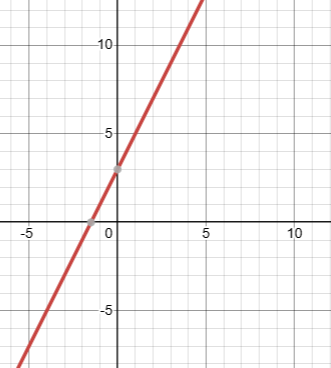Need to read: A Series
Lets begin quite simple, lets say I wanted to see how y changes as I change x in this equation (y = 2x + 3), than what I can do is make a graph. That is where I take every rational number that x could be and see what y would be. Then I would set the horizontal to x and verticle to y. Beneath this paragraph I have a section of the graph for the equation I just mentioned.

There is something we may want to do. Maybe we should try to figure out the slope of the line. Say if we have no variables powers, than the slope is just the multiple of the variable. So for 2x + 3, the slope should be 2. But lets say we had a variable power (like x^3) then we would have to use... CALCULUS. (This is because the slope varies from some points to others)
The formula for derivatives (not really) is "the derivative of x^n is nx^n-1" so the derivative of x^2 is 2x or the derivate of 60x^3 is 180x^2. This formula does not work with trig functions or logs. This formula also works with negative and fractional powers. Some examples are 2x^-2 is -4x^-3 and -8x^-4 is 32x^-5. So if wanted to figure out the slope of 2x^2 at x = 4 than we would figure out the derivative of 2x^2 (which is 4x) and than we should plug in 4 for 4 so the slope would be 16 at the point x = 4 of 2x^2
But what if we wanted to do the oppsite, finding the formula from the slope formula, than we would use intergation!